
Coronavirus: Features, Transmission, Symptoms and Mortality Rate
Some key insights into the novel coronavirus offered in the Report of the WHO-China Joint Mission on Coronavirus Disease 2019 (COVID-19)
Pathogen
The virus has features typical of the coronavirus family and belongs to the Betacoronavirus 2b lineage. Full genome sequence analysis of the novel coronavirus revealed that its closest relative is the SARS-like coronavirus strain BatCov RaTG13 from bats, with an identical rate of 96 percent.
COVID-19 is a zoonotic virus, meaning it originated from animals. The exact animal origin of the virus is still unknown, but evidence suggests bats are natural carrier of this virus. The intermediate hosts between bats and humans have not yet been identified.
Early cases identified in Wuhan, Hubei Province, are believed to have acquired the infection from an animal source as many reported visiting or working in the Huanan Wholesale Seafood Market. However, the virus carrying animal from the market that lead to the outbreak is unknown.
Viral samples collected from patients with symptoms between late December last year and mid-February showed 99.9 percent homology, meaning the virus had not experience significant mutation.
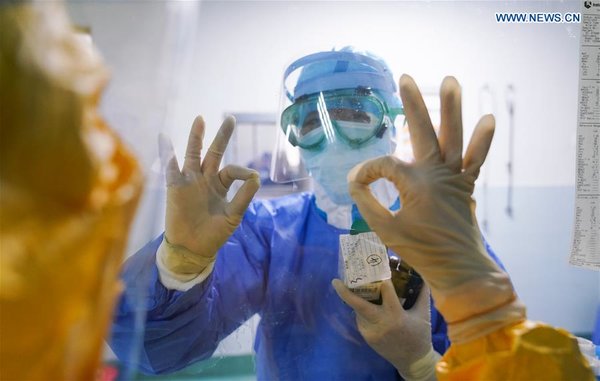 |
| Medical workers gesture to each other through the window in Zhangzhou Municipal Hospital in Zhangzhou, East China's Fujian Province, on Feb 2, 2020. [Photo/Xinhua] |
Transmission
The novel coronavirus is transmitted via droplets and fomites during close, unprotected contact between an infector and infectee. Airborne spread has not been reported for COVID-19 and it is not believed to be a major mode of transmission based on current evidence.
However, in healthcare facilities, people may catch the virus if they breathed in aerosol, the suspension of fine solid or liquid particles in air, that had been contaminated by the virus.
The virus can be found in some patients' fecal samples, but fecal-oral route does not appear to be the driver of COVID-19 transmission, and its role and significance remains to be determined.
In China, human-to-human transmission is largely occurring in families in some provinces, such as Guangdong and Sichuan.
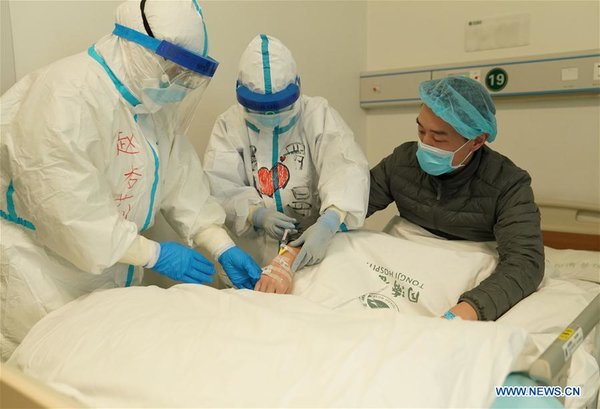 |
| Medical workers inject medicine for Li Zuofan (R) at an intensive care ward of the novel coronavirus infection cases at a branch of Tongji Hospital affiliated to Tongji Medical College of Huazhong University of Science and Technology in Wuhan, Central China's Hubei Province, Feb 18, 2020. [Photo/Xinhua] |
Symptoms
Symptoms of COVID-19 can range from no symptoms to severe pneumonia and death. Based on 55,924 confirmed cases, typical signs and symptoms include: fever (87.9%), dry cough (67.7%), fatigue (38.1%), sputum production (33.4%), shortness of breath (18.6%), sore throat (13.9%), headache (13.6%), myalgia or arthralgia (14.8%), chills (11.4%), nausea or vomiting (5.0%), nasal congestion (4.8%), diarrhea (3.7%), and hemoptysis (0.9%), and conjunctival congestion (0.8%).
People with COVID-19 generally develop signs and symptoms, including mild respiratory symptoms and fever, on an average of 5-6 days after infection. The average incubation period is five to six days, with a range going as far as 14 days.
Most people infected with the virus have mild disease and can recover. About 80 percent of lab confirmed cases have had mild to moderate disease, 13.8 percent severe disease, and around 6.1 are critical.
Confirmed patients showing no symptoms at the date of testing have been reported, but they are relatively rare and majority of them will eventually develop the disease.
 |
| Security staff members check passengers' temperature at Jinggangshan Airport in Ji'an, East China's Jiangxi Province, Feb 10, 2020. [Photo/Xinhua] |
Demographics
There have been 55,924 lab confirmed cases as of Feb 20. The median age is 51, with the majority of cases (77.8%) aged between 30-69 years. Among the reported cases, 51.1 percent are male, 77 percent are from Hubei, and 21.6 percent are farmers or laborers by occupation.
Individuals at the highest risk for severe disease include people aged over 60, and those with underlying conditions such as hypertension, diabetes, cardiovascular disease, chronic respiratory disease and cancer.
Disease in children is relatively rare with around 2.4 percent of the total reported cases aged below 19. A very small proportion of those aged under 19 patients developed severe (2.5%) or critical disease (0.2%).
Morality Rates
As of Feb 20, the crude fatality ratio of lab confirmed cases was around 3.8 percent. The overall fatality rates vary by location, and morality increases with age, with the highest being people over age 80.
The crude fatality ratio is higher among males compared to females (4.7% vs. 2.8%). And patients with underlying health conditions also had higher rates: 13.2% for those with cardiovascular disease, 9.2% for diabetes, 8.4% for hypertension, 8.0% for chronic respiratory disease, and 7.6% for cancer.
Because COVID-19 is a newly identified pathogen, there is no known pre-existing immunity in humans. Based on the epidemiologic characteristics observed so far in China, everyone is assumed to be susceptible.
There may be risk factors increasing susceptibility to infection. This requires further study, as well as to know whether there is neutralizing immunity after infection.
Transmission in Special Settings
There have been reported cases in healthcare facilities, prisons, and other closed settings. Presently it is unclear what role these settings and groups play in the transmission, but they do not appear to be major drivers of the overall epidemic.
As of Feb 20, there were 2,055 infected healthcare workers in 476 hospitals across China, the majority of which (88%) were reported from Hubei. Most of the infected medical workers were identified early in the outbreak in Wuhan when supplies and experience with the new disease was lower.
Additionally, investigations among healthcare workers suggest that many may have been infected within the household rather than in a healthcare setting. Outside of Hubei, healthcare worker infections have been less frequent.
There have been reports of COVID-19 transmission in prisons in Hubei, Shandong, and Zhejiang provinces. The close proximity and contact among people in these settings and the potential for environmental contamination are important factors, which could amplify transmission.
(Source: chinadaily.com.cn)
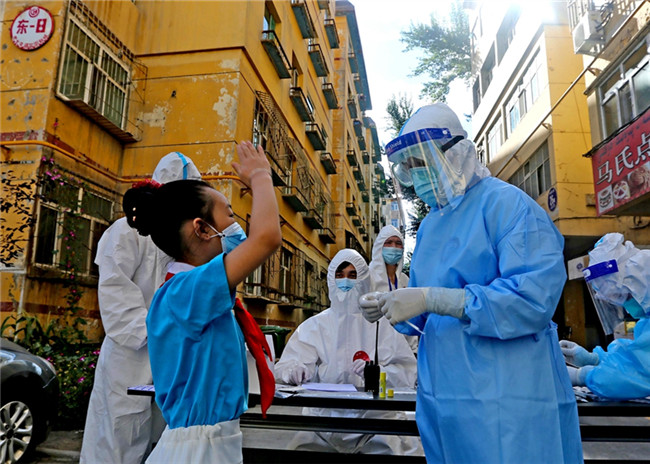 Women Medics in NW China's Xinjiang Contribute to COVID-19 Epidemic Containment
Women Medics in NW China's Xinjiang Contribute to COVID-19 Epidemic Containment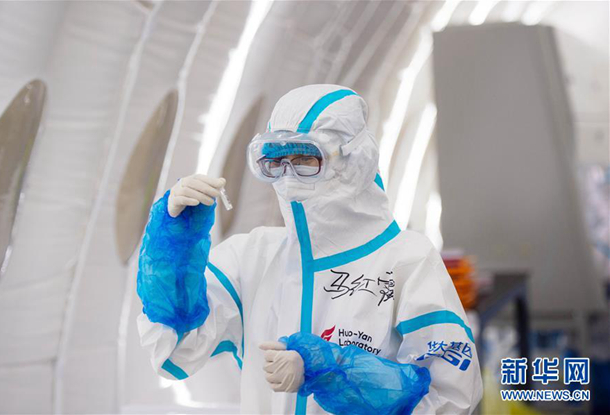 Women CPC Members on Front Line of Anti-COVID-19 Battle in Beijing
Women CPC Members on Front Line of Anti-COVID-19 Battle in Beijing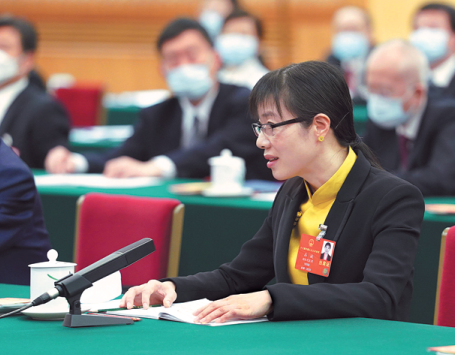 Deputy Recalls Role in COVID-19 Fight
Deputy Recalls Role in COVID-19 Fight- Woman Epidemiological Researchers Race Against the Clock on Front Line
 Pic Story of Nurse Who Aided COVID-19 Fight in Wuhan
Pic Story of Nurse Who Aided COVID-19 Fight in Wuhan Volunteer Provides Milk Tea, Back up Anti-Epidemic Workers in NE China
Volunteer Provides Milk Tea, Back up Anti-Epidemic Workers in NE China

 京公网安备 11010102004314号
京公网安备 11010102004314号